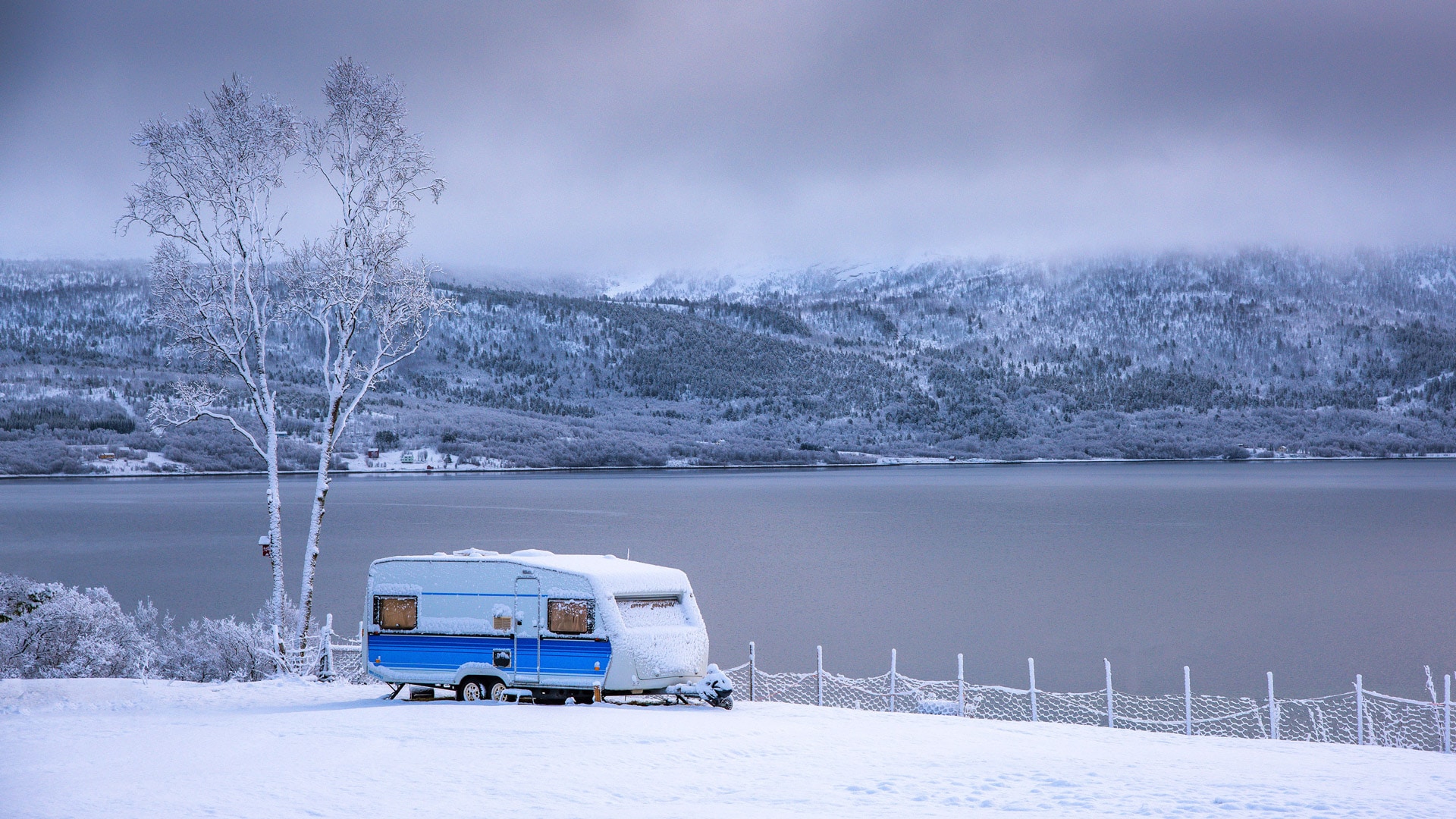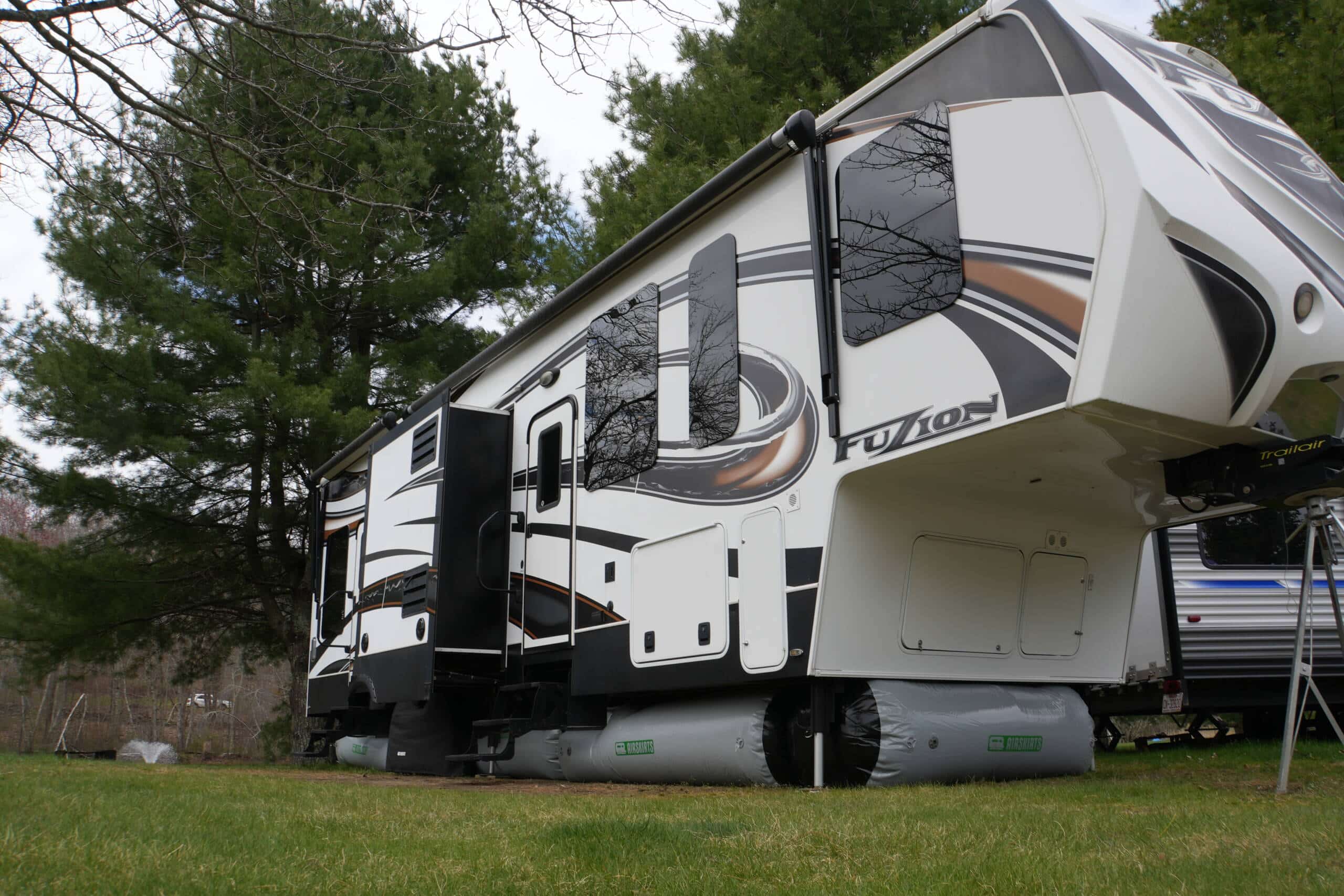How to Prepare for RVing in Cold Weather
By Ashley Mann of RVInspiration.com
Many people think of RVing as a way to escape cold climates during winter, but for those who want to camp while enjoying winter sports and outdoor activities, or who live in an RV full time and have location-dependent jobs and personal responsibilities, adequate preparation will make it possible survive just about any kind of weather.
Protect your water and sewage lines from freezing.
Frozen pipes and water lines are one of the most common problems encountered by people who haven’t taken the necessary precautions for RVing in freezing temperatures. Here are five steps that can help you avoid a burst water line or frozen sewage pipe:
- Use a heated water hose for your fresh water source, or wrap your water hose with electric heat tape. Another option is to carry bottled water for cooking and drinking and use RV park facilities for showering.
- If you are using fresh water hookups, be sure the connection point at each end of your hose is well insulated. A bucket or foam ice chest can be placed upside down over an in-ground connection to provide protection while allowing access if needed.
- Make sure your sewage hose drains downhill with no kinks, and keep your tanks closed except when emptying them. Vinyl guttering elevated at one end makes a good track for an RV sewage hose.
- Install skirting to protect pipes, tanks, and water lines underneath your RV.
- Monitor the temperature in the area where your hot water heater, sewage pipes, and water lines are located. A thermometer with remote sensors that connect wirelessly to your phone can give you peace of mind so you don’t end up lying in bed on a cold night wondering whether the precautions you’ve taken will be adequate.
- Consider having boxed water on hand just in case!
Reduce heat loss through your floor, walls, and windows.
Campers are notoriously under-insulated. Even a four-season RV can feel drafty inside and have you cranking the thermostat and burning through your propane tanks quickly.
Another problem you may run into in a chilly camper is condensation, which is formed when the moisture in the air from normal activities like breathing and cooking encounters a cold surface like a wall or a window.
Beefing up the insulation in various areas of your camper can help you save on heating costs and feel warmer as well as prevent mold and mildew problems caused by condensation.
If you have single-pane windows in your camper, you’ll notice a big difference by covering them with heat-activated window film (“shrink plastic”). For a more permanent solution, you could make storm windows out of plexiglass. Just make sure that whatever material you use to cover your RV windows seals in a layer of air next to the glass, because that is what actually provides the insulation.
Skirting your RV will also make a huge difference in reducing heat loss. In addition to protecting your pipes and water lines, the air trapped beneath your RV will provide a barrier to the cold and keep your heat from escaping through the floor by means of convection. If your camper has slide outs that the skirting doesn’t cover, you can insulate the floors of your slides by attaching a sheet of foam board insulation to the bottom exterior of each one.
There are multiple methods for skirting a camper, including both DIY options and professionally made skirting, but most of them take a few hours to install and take down at minimum. For a winter camping trip or for full-time RVers who move frequently, the AirSkirts system is a good skirting solution as it can be quickly set up and easily transported.
Don’t rely on a single heating source.
It’s never fun to realize in the middle of the night that your propane tanks have run out sooner than you thought or that your furnace starter is malfunctioning, but as long as you have a secondary source of heat, you’ll stay safe until you have a chance to deal with the problem.
If you have electrical hookups, an electric space heater makes a good backup heating source. Just be sure to follow the safety recommendations from your heater’s manufacturer. Most importantly, never plug a space heater into an extension cord or electrical outlet that isn’t rated for the amount of power an electric heater will draw, as doing so could start an electrical fire.
For camping off grid, a portable indoor propane heater such as a Mr. Heater would be a good choice for staying warm in an emergency situation. If worse comes to worst, bringing along a few bundles of firewood (if fires are allowed where you’re staying) will mean you can at least build an outdoor campfire.
Lastly, be sure to bring along plenty of blankets and warm clothes when RV camping or traveling in cold weather, including hats, gloves, and warm socks, so that no matter what type of weather you encounter, you’ll be able to stay toasty warm and enjoy exploring the outdoors.




Leave A Comment